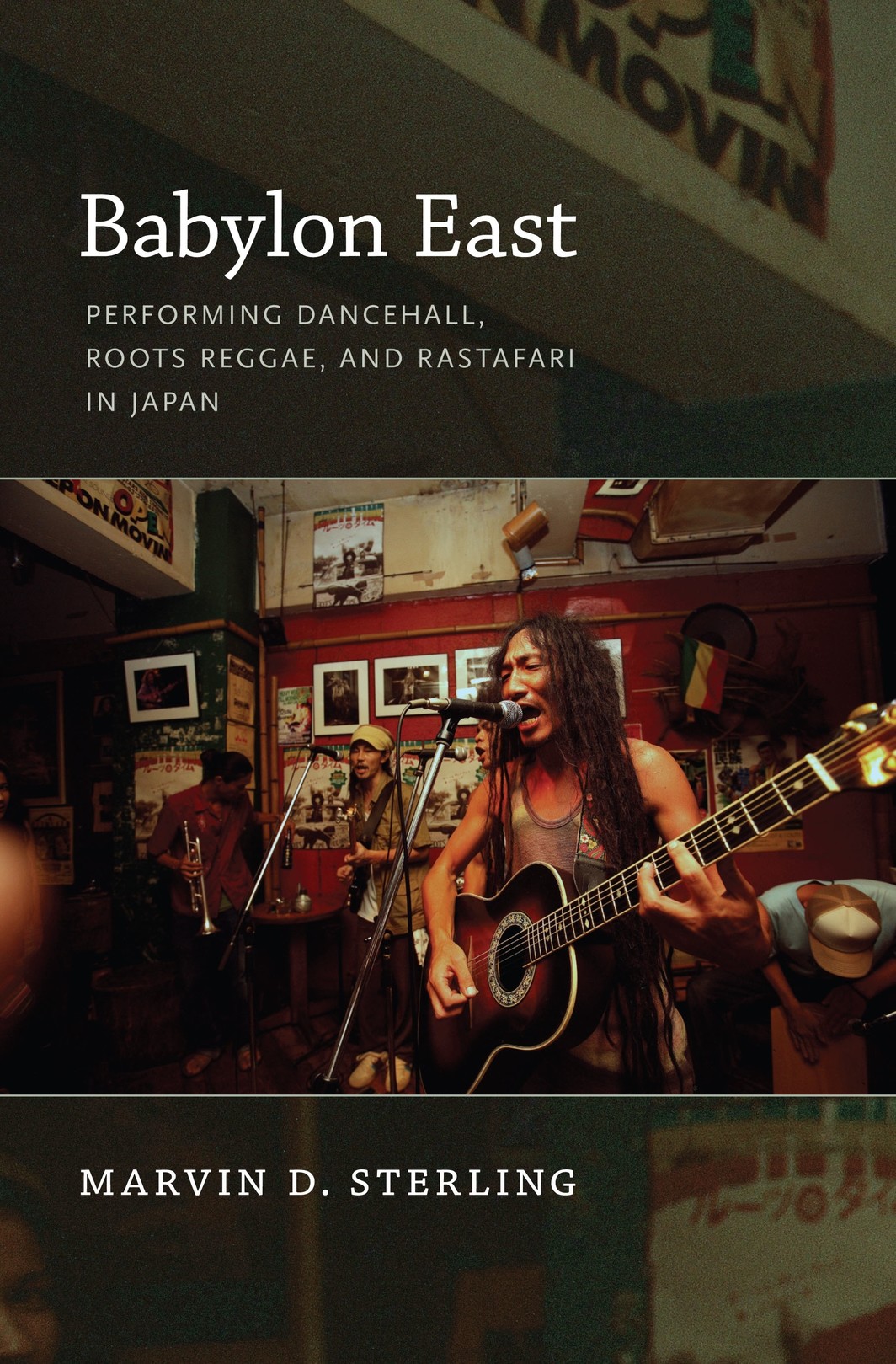
“I want to be black man. I want to be black man. Everytime.” This is the solemn admission of Brother Taffy, a Japanese dub musician. What happens when Jamaican Rasta and the musical and cultural styles affiliated with it, from roots reggae to dancehall, are taken out of the white-black binary and the Euro-Caribbean matrix? This is the question taken up by Marvin D. Sterling in Babylon East. Sterling spent more than ten years investigating Japanese involvement with Jamaican musical traditions, and his book testifies to the limitations of cross-cultural appropriation even in a globalized cultural scene.
“The tendency to view as ‘superficial’ Japanese engagement with foreign culture,” he writes, “emerges from Japan’s reputation as a society of voracious consumers.” Sterling argues against the idea that many Japanese see the consumption and appropriation of styles as the simple assertion of cosmopolitan identity, while somewhat reluctantly admitting that this is a form of “structural racism,” or the deployment of Japanese racial assumptions. Yet unlike deracinated subcultures such as rockabilly, goth, metal, and even, today, hip-hop, Jamaican music holds a strict racial and sociopolitical worldview that is far less malleable. Moreover, the Japanese have historically had little contact with black people and have fashioned a cultural understanding of blackness that is necessarily shallow; as Sterling puts it, their “blackness . . . is simulation.” Japanese fans and practitioners of this music may be well intentioned, but their enthusiasm yields such awkward expressions as skin darkening and ersatz dreads.
Sterling attributes Japanese cultural appropriation to recession-induced identity crises and a dissatisfaction with the spirituality in contemporary Japanese life. For instance, Taffy struggles with his identification with Jamaican music and culture, as well as his distance from Jamaica itself. Taffy calls the forces of capitalist oppression “Babylon” and sees the similarity of his struggle as a burakumin, a member of Japan’s outcast community, to that of descendents of African slaves: “I forefather, Japanese slave . . . like black man.”
Even non-Rasta Japanese participants in the dancehall and reggae scenes (Sterling profiles male musicians and female dancers, or donnettes) desire cultural legitimacy, whether through travel to Jamaica, mastery of patois, or getting top dancehall artists to make them dub plates for sound-system battles. But Japanese visitors to the island are frequently excluded, confused for Chinese, or rejected as imitators.
Surprisingly, Sterling finds that the Japanese who most manageably incorporate Rasta into daily life reside in rural, semi-traditional communities. They tend to be older roots-reggae musicians who came to Jamaican music in the late ’80s and early ’90s and identify as Rastas but have abiding interests in other cultures, from Hindu to American Indian. They participate in their towns’ economies, raise families, and even participate in local folk festivals, their long dreads coexisting with their traditional matsuri wear.
For many, however, being Japanese and involved in Jamaican-inspired music becomes a matter of total cultural alienation, and hence the tense, unstable racism and misapprehension of practitioners like Taffy, who selectively embrace Rasta principles or manufacture theories of Japanese-Jamaican kinship. These scenes are singularly Japanese, the outgrowth, certainly, of the style-hopping youth culture of bumu, but advanced and deepened to the point where these groups are forming new identities, not merely costumed weekend ones, and forging hybridized cultural forms in the process.

